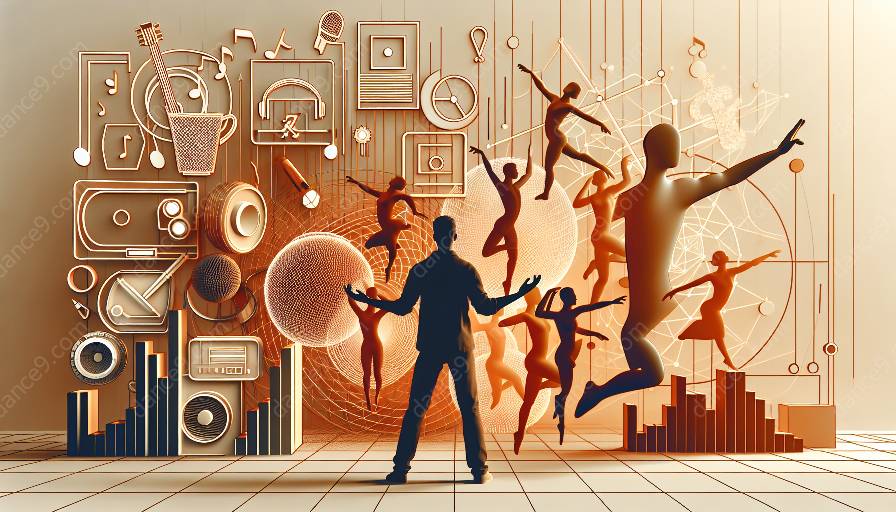As technology continues to advance, its influence extends into the realm of dance, inspiring cross-disciplinary collaborations that push the boundaries of artistic expression. This article delves into the dynamic relationship between dance and multimedia technology, examining how this convergence has led to innovative performances and new avenues for creative exploration.
1. Evolution of Dance and Multimedia Technology
The evolution of multimedia technology has transformed the way dancers and choreographers conceptualize their performances. Advances in lighting, projection mapping, virtual reality, and interactive media have introduced new dimensions to the dance experience. By seamlessly integrating these technologies into their choreography, dancers can transcend traditional performance boundaries and immerse audiences in captivating visual landscapes.
2. Cross-Disciplinary Collaborations
The fusion of dance and multimedia technology has sparked a wave of cross-disciplinary collaborations, bringing together professionals from various fields such as visual arts, digital media, and sound design. Through these partnerships, dancers are able to explore new forms of expression, harnessing the capabilities of multimedia technology to enhance their storytelling and convey powerful narratives.
2.1 Visual Storytelling Through Projection Mapping
Projection mapping has emerged as a powerful tool for dance performances, enabling choreographers to transform ordinary stages into dynamic canvases. By mapping intricate visuals onto the dancers' bodies and the surrounding environment, performers can create mesmerizing illusions that interact seamlessly with their movements, blurring the line between physical and digital art.
2.2 Interactive Multimedia Installations
Interactive multimedia installations have revolutionized audience engagement, inviting spectators to participate in the dance experience. Through motion-tracking technology and responsive visual displays, viewers can become active participants, influencing the performance in real time and forging a deeper connection with the artistry on stage.
3. Technological Innovations and Dance Performances
The marriage of technology and dance has catalyzed a wave of technological innovations that are redefining the boundaries of live performances. From holographic projections to sensor-driven costumes, dancers are continuously exploring new avenues for integrating cutting-edge technology into their choreography, pushing the boundaries of what is possible on stage.
4. Impact on Artistic Expression
As dancers embrace multimedia technology, their artistic expression undergoes a profound transformation. The ability to integrate visual and auditory elements into their performances enables dancers to convey complex emotions and narratives in ways that were previously unattainable. This fusion of art forms fosters a rich tapestry of expression, resonating deeply with audiences and expanding the possibilities of storytelling through movement.
5. Future Possibilities and Collaborative Opportunities
Looking ahead, the intersection of dance and multimedia technology presents an expansive landscape for future collaborations and innovations. As technology continues to evolve, dancers and technologists alike will have the opportunity to forge new paths, creating immersive, multi-sensory experiences that redefine the boundaries of traditional dance performances.

































